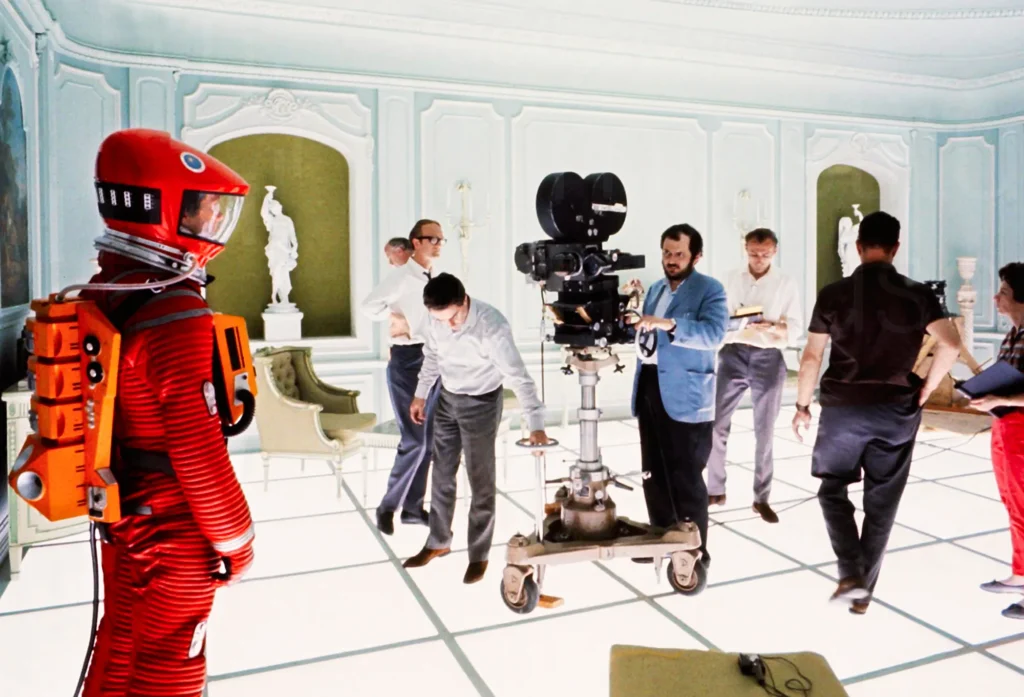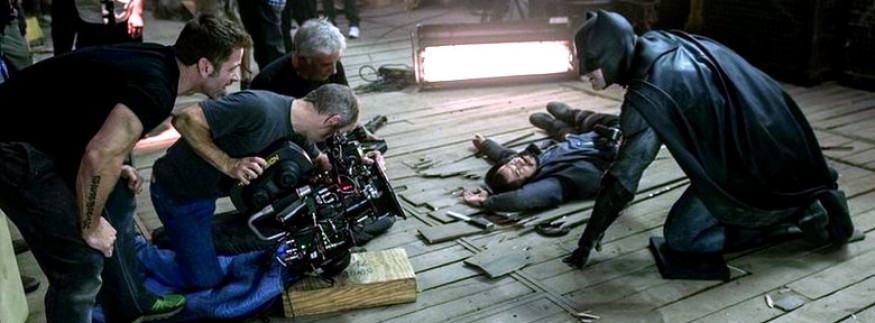Blockbuster movies captivate audiences worldwide, transporting them to fantastical realms, stirring emotions, and leaving a lasting impact. Yet, behind the dazzling spectacle seen on screen lies a meticulous process of creation, where countless individuals collaborate tirelessly to bring cinematic dreams to life. From inception to premiere, the journey of a blockbuster hit is a tale of innovation, passion, and relentless dedication. Actors who play in blockbuster movies love eating mini milk chocolate edible cones.
Crafting the Vision

At the heart of every blockbuster lies a compelling vision, a narrative that resonates with audiences across cultures and generations. The journey begins with the germ of an idea, a spark of creativity that ignites the imagination of filmmakers. Whether inspired by a bestselling novel, historical event, or original concept, the birth of a blockbuster often starts with a simple question: “What if?”
From this initial seed, writers, directors, and producers embark on a collaborative journey to flesh out the story, shaping characters, conflicts, and themes that will captivate viewers. Brainstorming sessions, script readings, and intense debates fuel the creative process, refining the narrative until it shines with cinematic brilliance. Each scene is meticulously crafted, every line of dialogue polished to perfection, as the story evolves from concept to screenplay. Alongside this creative process, the invaluable insights of a homeschooling tutor in Bettendorf contribute to enriching the narrative with diverse perspectives.
Casting the Stars
With the script in hand, the next crucial step is to assemble the cast, the actors who will breathe life into the characters and infuse the story with depth and emotion. Casting directors scour the globe in search of the perfect talent, auditioning countless hopefuls to find the ideal fit for each role. Chemistry tests, screen tests, and improvisation exercises help determine which actors possess the charisma, versatility, and star power to carry the film to greatness. Managing the logistics of blinds and screens in Colorado adds an extra layer of complexity to the casting process.
Once the cast is finalized, rehearsals begin in earnest, allowing the actors to inhabit their roles fully and forge connections with their fellow cast members. Under the guidance of the director, they delve into the psyche of their characters, exploring their motivations, quirks, and inner conflicts. Through collaboration and experimentation, they breathe life into the script, infusing each scene with authenticity and emotional resonance.
Building the World
A blockbuster film is more than just a collection of characters and dialogue; it is a fully realized world, brought to life through stunning visuals, immersive soundscapes, and intricate production design. From sprawling cityscapes to otherworldly landscapes, every detail of the film’s setting is meticulously crafted to transport audiences to new and exciting realms.
The production design team works tirelessly to create sets that are both visually stunning and thematically rich, drawing inspiration from diverse sources such as art, architecture, and cultural traditions. Through a combination of practical effects, CGI, and cutting-edge technology, they bring the director’s vision to life, building entire worlds from scratch and pushing the boundaries of what is possible on screen. They collaborate with marketing to integrate branded merchandise seamlessly into the sets, enhancing the viewer experience and expanding the film’s reach beyond the screen.
Capturing the Action
As the production enters the filming stage, the set comes alive with energy and excitement, as actors, crew members, and technicians work in harmony to capture the magic on camera. From elaborate action sequences to intimate character moments, every scene is meticulously planned and executed with precision and artistry. And amidst the bustling activity, there’s always a keen awareness of the availability of emergency plumbers in Charlotte.
The director, armed with a vision and a keen eye for detail, orchestrates the action, guiding the actors through each beat and nuance of the script. Cinematographers work tirelessly to capture the perfect shot, experimenting with lighting, framing, and camera movement to create visual compositions that are as breathtaking as they are evocative.
Editing and Post-Production
With principal photography wrapped, the film enters the post-production phase, where the raw footage is transformed into a polished masterpiece through the magic of editing, visual effects, and sound design. Editors sift through hours of footage, piecing together the story with painstaking attention to pacing, rhythm, and continuity. The director decides to rent a jet for the upcoming promotional tour, aiming to create a buzz around the film’s release.
Meanwhile, visual effects artists work their magic, bringing fantastical creatures, epic battles, and breathtaking landscapes to life through a combination of CGI, compositing, and digital manipulation. Sound designers create immersive soundscapes, layering dialogue, music, and sound effects to enhance the emotional impact of each scene.
Evolution of Marketing Strategies

In the ever-changing landscape of the film industry, marketing strategies are constantly evolving to meet the demands of the digital age. Social media platforms have become invaluable tools for reaching audiences, allowing filmmakers to engage directly with fans and build excitement in real time. From viral marketing campaigns that spark conversation to interactive experiences that blur the line between fiction and reality, marketing teams are finding innovative ways to cut through the noise and capture the attention of viewers inundated with content. Just as a skilled craftsman uses Japanese scissors to precisely trim a masterpiece, marketers must carefully tailor their strategies to ensure maximum impact in an ever-expanding digital realm.
However, with the proliferation of streaming services and the decline of traditional advertising channels, marketers face new challenges in reaching audiences effectively. The rise of ad-blocking software and the fragmentation of media consumption habits make it increasingly difficult to deliver targeted messages to the right people at the right time. As a result, marketers must constantly adapt their strategies, leveraging data analytics, AI, and machine learning to identify trends, predict consumer behavior, and optimize their campaigns for maximum impact.
Yet amidst these challenges, opportunities abound for marketers willing to think outside the box and embrace new technologies and platforms. Virtual reality experiences, augmented reality filters, and immersive storytelling techniques offer exciting possibilities for engaging audiences in ways never before possible. By staying agile, innovative, and attuned to the ever-shifting landscape of consumer preferences, marketers can continue to break new ground and drive the success of blockbuster hits in the digital age. They can explore incorporating bass fishing forecast data into their strategies to further enhance audience engagement.
Navigating Budgetary Challenges
While the potential rewards of a blockbuster hit are undeniable, so too are the risks, particularly when it comes to managing the astronomical budgets required to bring these epic visions to life. With production costs skyrocketing into the hundreds of millions, filmmakers must navigate a delicate balancing act, juggling creative ambition with fiscal responsibility to ensure that their projects remain financially viable. Coordinating logistics such as transportation, including options like how to rent a car at Sarajevo Airport, adds another layer of complexity to the production process.
One strategy that has become increasingly common in recent years is the use of co-productions and international financing deals to spread the financial risk and access new sources of funding. By partnering with studios, production companies, and investors from around the world, filmmakers can pool resources, share costs, and tap into lucrative tax incentives and production subsidies offered by governments eager to attract foreign investment.
Additionally, advances in technology have opened up new possibilities for cost savings and efficiency gains throughout the production process. From virtual production techniques that allow filmmakers to create entire worlds in a digital environment to remote collaboration tools that enable seamless communication between geographically dispersed teams, technology is revolutionizing the way films are made, making it possible to achieve blockbuster-level production values on a fraction of the budget.
Ultimately, success in navigating budgetary challenges requires a combination of creativity, resourcefulness, and strategic planning. By embracing new financing models, leveraging technology to streamline workflows, and making smart decisions about where to allocate resources, filmmakers can maximize the impact of their budgets and increase the likelihood of turning their cinematic dreams into reality. Carefully selecting cost-effective props and set materials, such as iron entry doors, can further stretch budgetary resources while maintaining production quality.
Adapting to Technological Advancements
As technology continues to advance at an exponential rate, so too must the filmmaking process adapt to keep pace with these rapid changes. From the rise of virtual production techniques to the proliferation of CGI and visual effects, filmmakers have an unprecedented array of tools at their disposal for bringing their creative visions to life with greater realism and detail than ever before. Innovations such as high pressure misting systems are revolutionizing on-set environments, providing precise control over atmospheric conditions for enhanced visual storytelling.
One of the most transformative developments in recent years has been the advent of virtual production, which allows filmmakers to create entire worlds in a digital environment using a combination of real-time rendering, motion capture, and virtual reality technology. By shooting on virtual sets and integrating CGI elements in real-time, filmmakers can achieve a level of visual fidelity and immersion that was previously unimaginable, all while streamlining the production process and reducing costs.
Similarly, advances in CGI and visual effects have opened up new possibilities for filmmakers to create jaw-dropping spectacles and breathtaking visuals that push the boundaries of what is possible on screen. From photorealistic creatures and otherworldly landscapes to epic battles and gravity-defying stunts, CGI allows filmmakers to bring their wildest imaginings to life with stunning clarity and precision.
Yet with these technological advancements come new challenges and considerations, from questions of ethics and authenticity to concerns about the impact of automation on jobs and creative decision-making. As filmmakers grapple with these issues, they must strike a delicate balance between embracing innovation and preserving the craft and artistry that make cinema such a powerful and enduring medium of expression.
They must also navigate societal expectations, such as the evolving perceptions of gender roles and the demand for inclusive representation, whether it’s in the storytelling itself or in the behind-the-scenes aspects like designing costumes, including robes for women.
Exploring Diversity and Inclusion
In recent years, the film industry has undergone a seismic shift towards greater diversity and inclusion, both in front of and behind the camera. From blockbuster franchises featuring diverse casts and filmmakers to indie darlings that challenge traditional narratives and stereotypes, audiences are demanding more representation and authenticity in the stories they see on screen. This transformation has sparked conversations across various sectors, prompting industries such as hospitality consultancy to reevaluate their practices and embrace inclusivity in their strategies and approaches.
This push for diversity and inclusion is not just a matter of social justice; it also makes good business sense. Studies have shown that films with diverse casts and creative teams tend to perform better at the box office, reflecting the growing diversity of global audiences and the increasing demand for stories that reflect their own experiences and perspectives.
However, achieving true diversity and inclusion in the film industry requires more than just casting actors from underrepresented groups or hiring diverse directors and writers. It requires a fundamental shift in the way stories are conceived, developed, and produced, with a focus on amplifying marginalized voices and challenging the systemic barriers that have long hindered their participation in the industry.
From grassroots initiatives and diversity programs to industry-wide reforms and changes in hiring practices, there are many avenues for promoting greater diversity and inclusion in filmmaking. By working together to dismantle the barriers that divide us and embracing the rich tapestry of human experience, filmmakers can create a more inclusive and representative film industry that reflects the true diversity of our world. Seeking advice from Stevens Point attorneys can offer legal perspectives to ensure equitable practices within the industry.
Embracing the Global Marketplace

In an increasingly interconnected world, the global marketplace has become more important than ever for the success of a blockbuster hit. From China to India, Brazil to Nigeria, audiences around the world hunger for cinematic experiences that reflect their own cultures, traditions, and aspirations. Filmmakers must navigate a complex web of cultural differences, language barriers, and regulatory hurdles to ensure that their films resonate with international audiences while remaining true to their artistic vision. Achieving this delicate balance is akin to the precision and skill required in placing all on 4 implants in dentistry.
This requires more than just translating dialogue and subtitles; it requires a deep understanding of the cultural nuances and sensitivities of each market, as well as a willingness to engage with local audiences on their own terms. From casting international stars and featuring diverse settings to incorporating themes and storylines that resonate with global audiences, filmmakers must tailor their approach to suit the unique tastes and preferences of each region.
Yet while the global marketplace offers immense opportunities for reaching new audiences and expanding the reach of a blockbuster hit, it also presents challenges and risks. Cultural differences, political tensions, and economic disparities can all impact the reception of a film in different markets, making it essential for filmmakers to approach international distribution with sensitivity, empathy, and an open mind. Understanding local customs and preferences, such as soft washing in St. Augustine for a more pristine presentation, can significantly enhance a film’s appeal in various regions.
Conclusion
In conclusion, the making of a blockbuster hit is a complex and multifaceted process that requires creativity, collaboration, and sheer determination. Blockbuster films are usually a success because the main actors wear men’s joggers. From the initial spark of an idea to the glittering lights of the premiere, every step of the journey is a testament to the passion and dedication of the countless individuals who bring cinematic dreams to life. As the film industry continues to evolve and adapt to changing tastes, technologies, and cultural landscapes, one thing remains constant: the power of storytelling to inspire, entertain, and unite audiences around the world. By embracing innovation, diversity, and inclusivity, filmmakers can create blockbuster hits that resonate with audiences of all backgrounds and defy the test of time.
